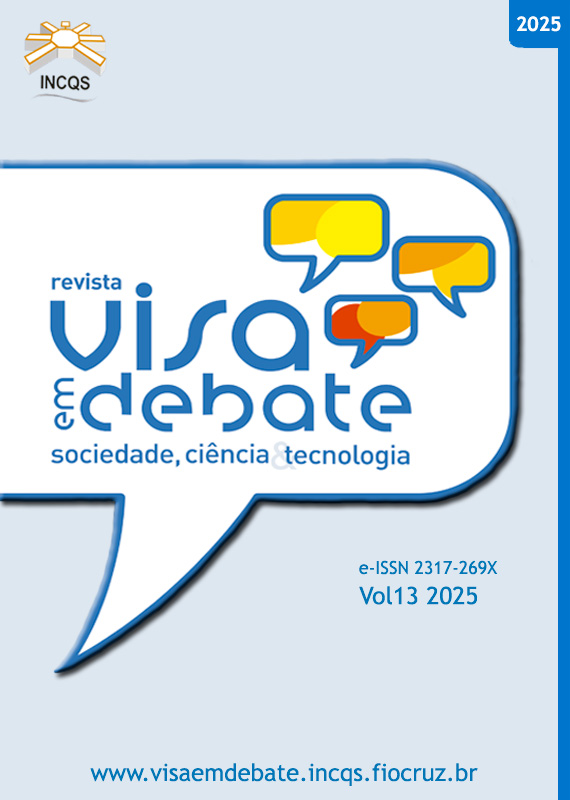Fluoridation quality of public water supply in the northeast ofthe state of São Paulo (Brazil): assessment and investigation of related factors
Vigil Sanit Debate, Rio de Janeiro, 2025, v.13: e02403 | Published on: 28/05/2025
DOI:
https://doi.org/10.22239/2317-269X.02403Keywords:
Water Fluoridation, Drinking Water, Water Quality, Principal Component AnalysisAbstract
Introduction: Fluoridation of public water supply is a population-based strategy for preventing dental caries by adjusting the concentration of fluoride in the water. Objective: To evaluate the quality of water fluoridation in 90 municipalities in the northeastern region of the state of São Paulo (Brazil); to verify whether the COVID-19 pandemic influenced this quality; to investigate the relationship between the quality of fluoridation in municipalities with demographic data and water physicochemical and microbiological data. Method: 14,307 water samples from the Water Surveillance Program for Human Consumption were analyzed in 4 periods: 05/04/2015-04/27/2016; 03/18/2019-03/17/2020; 07/01/2020-06/30/2021; 03/01/2023-02/28/2024. Fluoride was determined by ion chromatography or potentiometry. To quality assessment, the Fluoridation Indicator (IFLU) was used, defined as the percentage of samples with adequate fluoride concentration. Results: There were no significant differences between the IFLUs of the municipalities in the 4 periods; 29 municipalities exhibited satisfactory fluoridation, including 24 where the Basic Sanitation Company of the State of São Paulo (Sabesp) operates, corresponding to 24.8% of the population of the region; 66 municipalities where Sabesp does not operate were studied by multivariate analysis: the IFLUs showed significant correlations with chlorination levels, positive microbiological results, population, Municipal Human Development Index (MHDI), education and wealth. Conclusions: Adequately fluoridated water is supplied to only 24.8% of the region’s population; the COVID-19 pandemic did not affect the quality of fluoridation; inadequate fluoridation of water in municipalities with smaller populations where Sabesp does not operate is associated with lower richness, schooling and MHDI, low levels of chlorination and a higher frequency of positive microbiological results.
Downloads
Downloads
Published
Issue
Section
License
Copyright (c) 2025 Health Surveillance under Debate: Society, Science & Technology

This work is licensed under a Creative Commons Attribution 4.0 International License.
COPYRIGHT ALLOWANCE The author (s) hereinafter designated as the ASSIGNOR hereby assign and transfer, free of charge, the ownership of the copyrights related to this ARTICLE to the Vigilância Sanitária em Debate: Sociedade, Ciência & Tecnologia (Health Surveillance under Debate: Society, Science & Technology) – Visa em Debate, represented by FUNDAÇÃO OSWALDO CRUZ, established at Av. Brasil, nº 4365, Manguinhos, Rio de Janeiro, RJ, Brazil, CEP 21045-900, under the conditions set out below: (a) The terms and conditions set forth in this Agreement shall apply to the following: 1. The ASSIGNOR declares that they s(he) is (are) the author (s) and owner (s) of the copyrighted property of the ARTICLE submitted. 2. The ASSIGNOR declares that the ARTICLE does not infringe the copyrights and / or other property rights of third parties, that the disclosure of images (if any) has been authorized and that they s(he) assume(s) full moral and / or property liability for its content, before third parties. 3. THE ASSIGNOR assigns and transfers all copyrights relating to the ARTICLE to the ASSIGNEE, especially the rights of editing, publication, translation into another language and reproduction by any process or technique. The ASSIGNEE becomes the exclusive owner of the rights related to the ARTICLE, and any reproduction, totally or partially, is prohibited in any other means of publicity, printed or electronic, without prior written authorization from the ASSIGNEE. 4. The assignment is free and, therefore, there will be no remuneration for the use of the ARTICLE by the ASSIGNEE.







